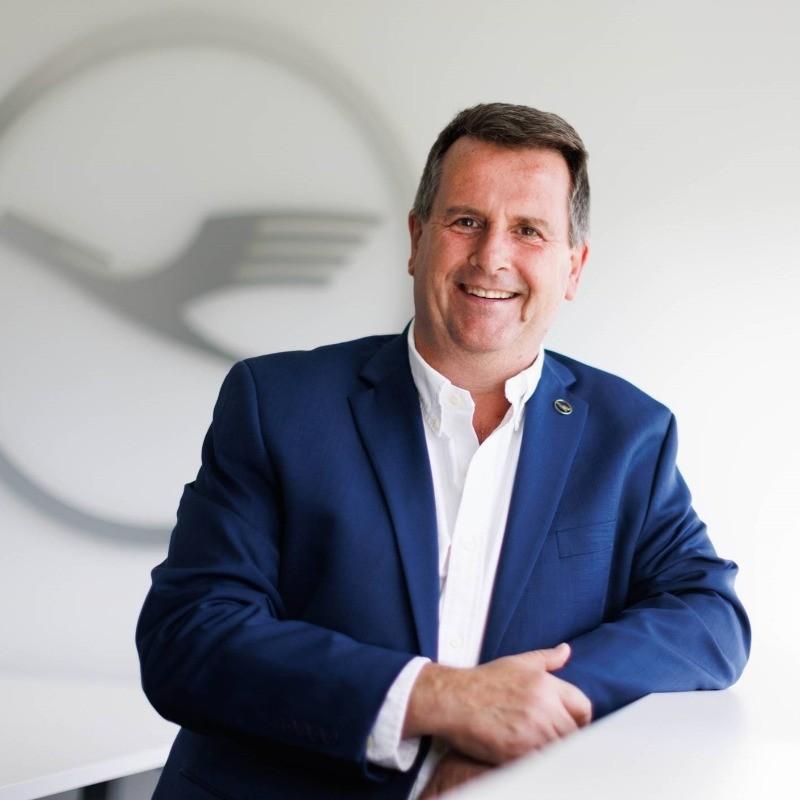Fast 5: Lufthansa Technik Turbine Shannon Eyes Greater Engine Parts Volumes

Pat Foley, CEO of Lufthansa Technik Turbine Shannon
Pat Foley, appointed as managing director and CEO of Lufthansa Technik Turbine Shannon last month, discusses the Ireland-based company’s plans for growth and how it is weighing up moves into parts repair for new-generation engine programs.
Lufthansa Technik Turbine Shannon (LTTS) looks to have rebounded strongly since the pandemic. Is the company and the wider industry headed in the right direction?
I think LTSS probably mirrors what’s happening in the industry. We can all agree that the crisis is over. The number of aircraft back in operations are almost at pre-COVID level. Looking at LTTS, our revenues and our headcount have exceeded 2019 levels, supported by the Engine Manifold Center capacity which was opened earlier this year. We don’t have a shortage of work—right now we are as busy as we can be, and this has resulted in a very strong rebound in our business.
That’s not to say that the recovery years were easy ones. There were a lot of challenges related to getting back to work, getting processes back up and running, getting the supply chain to meet our demands and understanding what we can produce versus what the systems would allow us to produce. However, we currently have a very stable operation, and we are now looking at how we can optimize our production and focus on areas such as reducing turnaround times and getting the supply chain to support us more effectively.
LTTS specializes in specific engine parts repairs. How is that market recovering in 2023, given the previous slowdown in engine MRO demand?
We see it recovering strongly. There is a lot of demand from potential new customers as well as existing customers to get more capacity from us. Current engine MRO spending is close to 2019 levels, and some analysts project this to increase by around 50% over the next 10 years or so. But in the short to medium-term, the challenge is not whether demand will be there but rather how the industry can service and meet the demand. In the longer term, we need to look at where we want to be over the next 10-20 years. Obviously, we play a key role in supporting our engine overhaul shop, but we also play a role outside of that in supporting our third-party customers. The biggest engine types we are supporting are the CFM56-5 and CFM56-7, but we need to consider how long our core products will sustain us and when we need to step into newer engine types. The Leap 1A and 1B are strong options that we are considering as they are important engines for Lufthansa Technik. We’re certainly curious to explore how we can support that engine within our portfolio.
What specifics are you seeing in terms of supply chain performance in this segment? Has the supply chain smoothed over in the past year?
It’s still far away from where we’d want it to be. The general supply chain, such as getting raw materials and parts to support our operation, is challenging just like everywhere else. What we were able to successfully do last year was to optimize how we manage our processes, for example, by increasing our stock levels and building buffers in our systems to protect our customer deliveries. Our team analyzed what we could realistically achieve given the current challenges and set targets based on that. So far, these targets have been met consistently and we see opportunities to improve on those and increase our throughput in the Shannon facility.
In terms of market expectations, after discussions and engagement with our customers, we agreed that having reliable and consistent output was the main priority. Our focus will be on improving our throughput and we are confident that this will get better. However, there is still a lot of uncertainty in the supply chain and it’s probably too soon to predict when things will level out.
Inflation in Ireland stood at around 6.3% in August 2023. How has this impacted LTTS in terms of labor rates and material costs?
We’re seeing pressure on materials, labor costs and areas such as energy costs at our facilities—so it’s across the board. Our teams have done an excellent job of managing those costs and minimizing the impact on our customers. While it's encouraging to see inflation starting to come back down in recent months, I believe there are still some challenges ahead as the inflation is still significantly above the European Central Bank’s target of 2%.
How is LTTS actively growing or looking to add to its workforce in Shannon?
Right now, our headcount is around 15% more than it was pre-COVID back in early 2020. The company has successfully added more than 100 people over the last 18 months, and the majority of that recruitment has come from Shannon and surrounding regions. That’s a remarkable achievement. We have a strong employer brand in the region and a very high labor retention rate.
I’m less worried about attracting or retaining talent at LTTS in Ireland than I would be in other locations in the world. That’s not to say I’m not concerned. I think you always have to focus on both attracting and retaining talent. Addressing the concerns and needs of employees while also investing in and developing them is always one of our main priorities. I believe if we wanted to fill another 20 or 30 roles—which I think we may look to do, for example in the Engine Manifold Center—I would be confident in our ability to do it.



